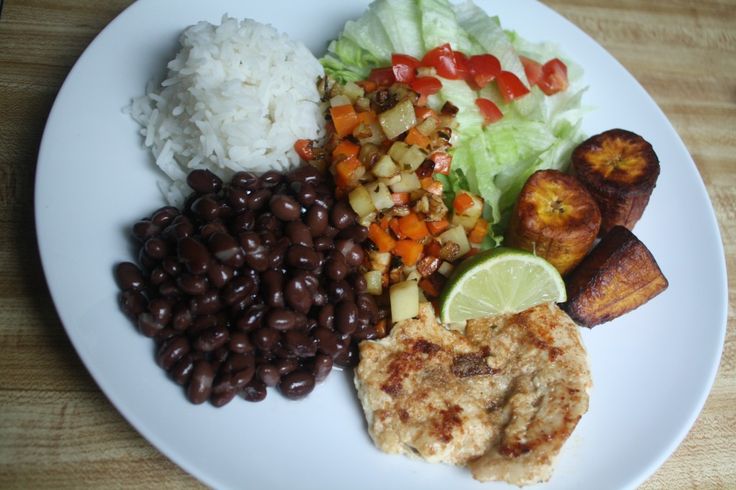The Role of Food in Costa Rican Culture
Food plays a crucial role in Costa Rican culture, as it reflects the country’s history, geography, and social customs. Costa Ricans are known for their love of food and their commitment to using fresh, locally-sourced ingredients. Eating together is an important aspect of family life, and meals are often a time for socializing and bonding. Traditional Costa Rican dishes are often prepared at home and passed down from generation to generation, which helps to preserve the country’s culinary heritage.
History of Costa Rican Cuisine
The history of Costa Rican cuisine is closely tied to the country’s indigenous, African, and Spanish roots. Pre-Columbian diets were based on maize, beans, and squash, which were accompanied by regional fruits and vegetables. When the Spanish colonized Costa Rica in the 16th century, they introduced new ingredients such as rice, wheat, and livestock. African slaves brought over by the Spanish also contributed to the country’s culinary heritage by introducing dishes such as rice and beans and coconut milk-based soups. Today, Costa Rican cuisine is a fusion of these influences, with traditional dishes such as gallo pinto, ceviche, and arroz con pollo being popular throughout the country.
Traditional Ingredients in Costa Rican Food
Costa Rican cuisine makes use of a diverse range of fresh, local ingredients. Some of the most commonly used ingredients in traditional dishes include rice, beans, corn, plantains, yucca, and potatoes. Seafood is also a staple in coastal regions, with dishes such as ceviche and grilled fish being popular. Inland regions tend to rely more on meat dishes, with pork and beef being the most common. Spices such as cilantro, cumin, and oregano are often used to add flavor to dishes.
Cultural Influences on Costa Rican Cuisine
Costa Rican cuisine has been shaped by a variety of cultural influences over the centuries. Indigenous, Spanish, and African traditions have all contributed to the country’s culinary heritage, as have more recent immigrant communities. For example, Chinese and Italian immigrants have introduced new flavors and cooking techniques to the country. Additionally, Costa Rica’s proximity to other Latin American countries has led to the adoption of dishes such as tamales and empanadas.
Regional Variations in Costa Rican Cooking
Costa Rican cuisine varies from region to region, with different ingredients and cooking techniques being used depending on the local climate and geography. Coastal regions tend to rely more on seafood and tropical fruits, while inland regions favor meat and root vegetables. In the highlands, dishes such as chifrijo (a combination of rice, beans, pork, and pico de gallo) and olla de carne (a beef and vegetable stew) are popular. In contrast, Caribbean-inspired dishes such as rice and beans with coconut milk and spicy chicken can be found on the Atlantic coast.
Religious Significance of Costa Rican Foods
Costa Rican cuisine has a strong connection to religious traditions, especially when it comes to holiday celebrations. For example, during the Christmas season, many Costa Ricans prepare tamales, which are filled with pork, vegetables, and spices. The preparation of tamales is a time-intensive process that involves multiple family members, and the dish is often seen as a symbol of unity and community. Additionally, during Holy Week, many Costa Ricans abstain from eating meat and instead prepare dishes such as arroz con leche (rice pudding) and torrejas (a type of fried bread).
Social Significance of Costa Rican Cuisine
Food is a central part of social life in Costa Rica, and meals are often seen as a time for bonding and connecting with others. Family gatherings, holiday celebrations, and even business meetings often take place over a shared meal. Many traditional Costa Rican dishes are also associated with memories and nostalgia, as they are often prepared using family recipes that have been passed down through the generations.
Celebrations and Festivals with Costa Rican Food
Costa Rican cuisine is an integral part of many cultural celebrations and festivals. For example, during the Dia de los Muertos (Day of the Dead) celebrations in November, many Costa Ricans prepare traditional dishes such as arroz con leche and tamales to honor their loved ones who have passed away. The country’s Independence Day celebrations in September also often include food and drink, with dishes such as chicharrones (fried pork rinds) and corn-based snacks being popular. Additionally, many local fairs and festivals feature food stalls selling traditional Costa Rican dishes, providing visitors with a taste of the country’s culinary heritage.

